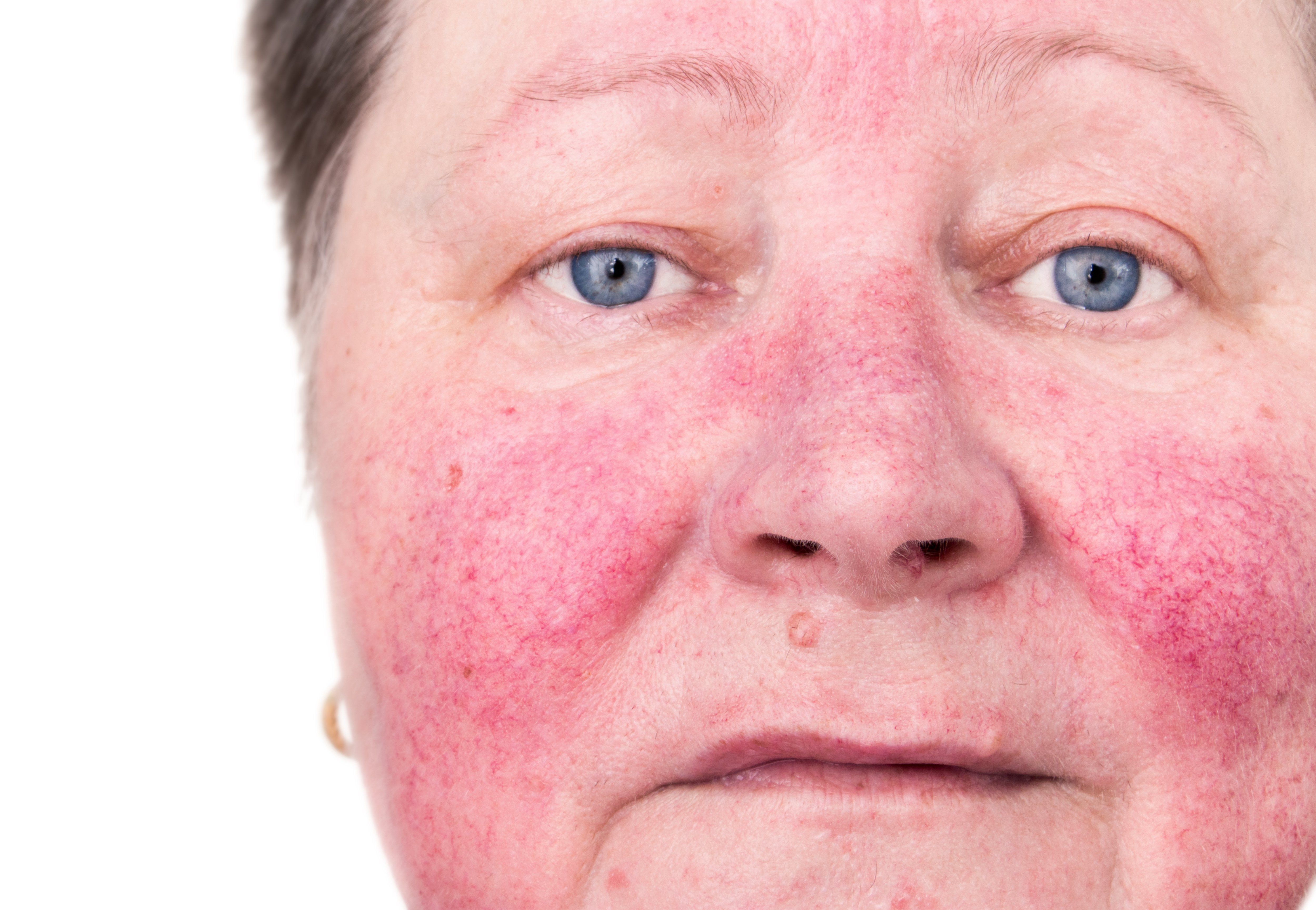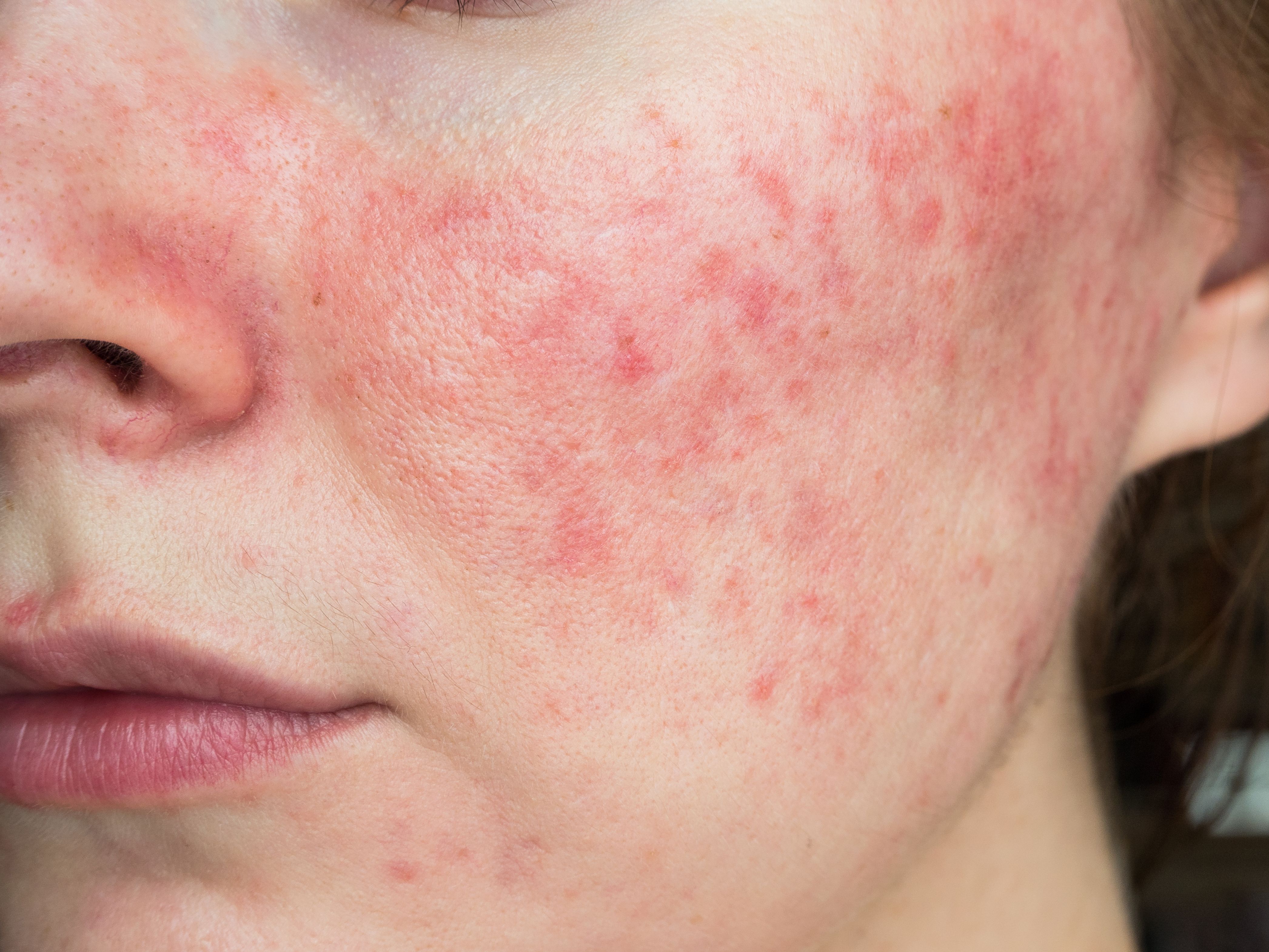- Case-Based Roundtable
- General Dermatology
- Eczema
- Chronic Hand Eczema
- Alopecia
- Aesthetics
- Vitiligo
- COVID-19
- Actinic Keratosis
- Precision Medicine and Biologics
- Rare Disease
- Wound Care
- Rosacea
- Psoriasis
- Psoriatic Arthritis
- Atopic Dermatitis
- Melasma
- NP and PA
- Skin Cancer
- Hidradenitis Suppurativa
- Drug Watch
- Pigmentary Disorders
- Acne
- Pediatric Dermatology
- Practice Management
- Prurigo Nodularis
- Buy-and-Bill
Article
Sol-Gel’s rosacea cream may offer patients rapid relief
Author(s):
Positive phase 3 results from two clinical trials suggests that Sol-Gel’s novel 5% microencapsulated benzoyl peroxide cream may offer quick, effective relief for patients with papulopustular rosacea.

Recent phase 3 data suggests a novel 5% microencapsulated benzoyl peroxide cream (Epsolay, Sol-Gel) may be a quick, effective treatment option for patients with papulopustular rosacea (PPR).
MORE: Combination therapy significantly improves rosacea symptoms
Currently, benzoyl peroxide is not approved by the U.S. Food and Drug Administration (FDA) to treat rosacea and is known to potentially cause skin irritation, including stinging, burning and erythema in individuals with PPR. Sol Gel’s patented microencapsulation technology aims to reduce this risk by encapsulating the benzoyl peroxide inside porous silica microcapsules, according to the company. This generates a barrier between the skin and the drug - with the microcapsules dispensing doses of the drug while the barrier reduces benzoyl peroxide’s oxidative effect, which can cause skin irritation.
Researchers of the phase 3, identical, vehicle-controlled, double-blind clinical studies (SGT 54-01 and SGT 54-02) investigated the efficacy and safety of 5% microencapsulated benzoyl peroxide cream for patients with PPR. The studies consisted of 733 patients 18 years and older with moderate-to-severe PPR who were enrolled from 54 sites across the U.S. and randomized (2:1 ratio) to receive either 5% microencapsulated benzoyl peroxide cream (n=495) or vehicle (n=240) once daily for 12 weeks.
During the studies, patients were evaluated in 2-week intervals after initial treatment (week 2, 4, 6, 8 and 12), in which a number of patients treated with microencapsulated benzoyl peroxide demonstrated significant efficacy at week 2 compared to those who received vehicle.
“While we expected to see strong efficacy and tolerability with Epsolay, the rapid efficacy was a standout in our phase 3 studies,” says Alon Seri-Levy, M.D., CEO of Sol-Gel, Israel.
Sol-Gel reports all primary and secondary endpoints were met in each study, according to a company press release. Primary endpoints for SGT 54-02 and SGT 54-02 included the a proportion of patients achieving “clear” or “almost clear” on the Investigator’s Global Assessment (IGA) scale at week 12 (43.5% versus 16.1% vehicle, 50.1% versus 25.9% vehicle respectively) and absolute mean reduction from baseline in inflammatory lesion count (-17.4 versus -9.5 vehicle, -20.3 versus -13.3 vehicle respectively).
Secondary endpoints were also met and included the proportion of participants that achieved an IGA score of “clear” or “almost clear” and an absolute mean change in inflammatory lesion count from baseline at weeks 4 and 8.
The company reports a low rate of cutaneous side effects, noting the drug appears to be well-tolerated and safe. Adverse events during the trials included application site pain and erythema in 3.4% of patients. Additionally, while there were no-treatment-related serious adverse events; researchers reported that a combined 11 participants discontinued treatment (9 benzoyl peroxide, 1 vehicle) due to adverse events.
“It’s very difficult for patients of any dermatological disease, let alone rosacea, to wait months for a positive clinical result. That a quarter of Epsolay patients in both trials reached their treatment goals within a month, when the efficacy of existing topical products can be quite slow, is clinically meaningful and illustrates a clear unmet need within a rapidly growing marketplace,” says Dr. Seri-Levy.
RELATED: Sol-Gel pipeline update 2020
Sol-Gel plans to submit a New Drug Application (NDA) for the 5% microencapsulated benzoyl peroxide cream to the FDA during the first half of 2020, according to their 2020 pipeline update. If accepted and approved by the FDA, the drug could become the first approved prescription single-active benzoyl peroxide product in the U.
References:
Sol Gel Announces Positive Top-Line Results from Epsolay® Phase 3 Program in Papulopustular Rosacea: Sol-Gel. Sol-Gel. https://ir.sol-gel.com/news-releases/news-release-details/sol-gel-announces-positive-top-line-results-epsolayr-phase-3. Published July 8, 2019. Accessed March 2, 2020.






